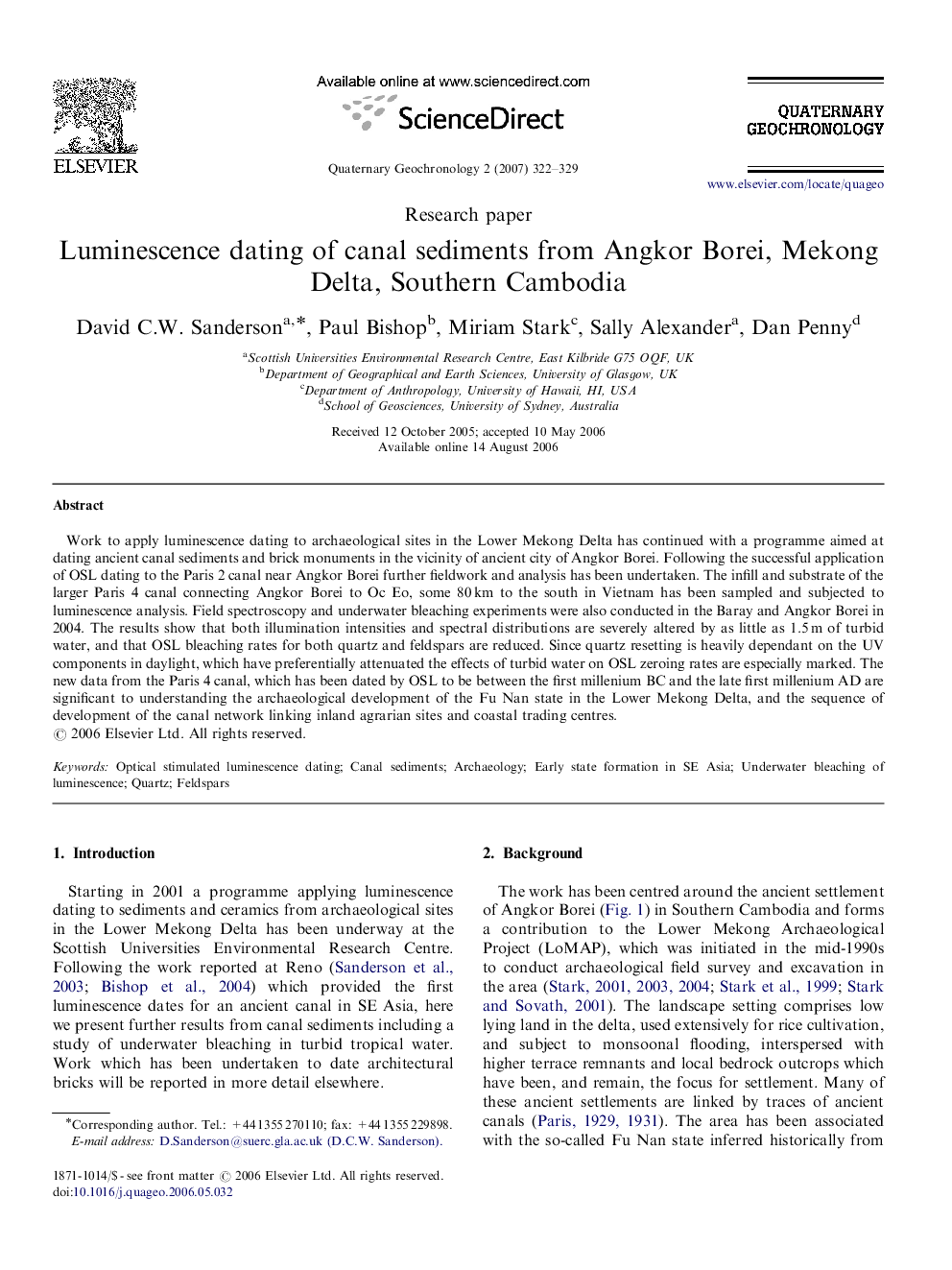| Article ID | Journal | Published Year | Pages | File Type |
|---|---|---|---|---|
| 4725423 | Quaternary Geochronology | 2007 | 8 Pages |
Work to apply luminescence dating to archaeological sites in the Lower Mekong Delta has continued with a programme aimed at dating ancient canal sediments and brick monuments in the vicinity of ancient city of Angkor Borei. Following the successful application of OSL dating to the Paris 2 canal near Angkor Borei further fieldwork and analysis has been undertaken. The infill and substrate of the larger Paris 4 canal connecting Angkor Borei to Oc Eo, some 80 km to the south in Vietnam has been sampled and subjected to luminescence analysis. Field spectroscopy and underwater bleaching experiments were also conducted in the Baray and Angkor Borei in 2004. The results show that both illumination intensities and spectral distributions are severely altered by as little as 1.5 m of turbid water, and that OSL bleaching rates for both quartz and feldspars are reduced. Since quartz resetting is heavily dependant on the UV components in daylight, which have preferentially attenuated the effects of turbid water on OSL zeroing rates are especially marked. The new data from the Paris 4 canal, which has been dated by OSL to be between the first millenium BC and the late first millenium AD are significant to understanding the archaeological development of the Fu Nan state in the Lower Mekong Delta, and the sequence of development of the canal network linking inland agrarian sites and coastal trading centres.
